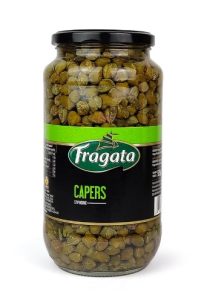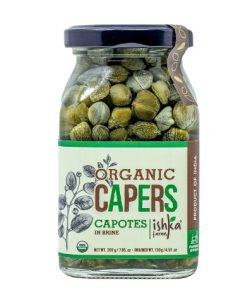
When it comes to adding that extra zing to your culinary creations, nothing quite does the job like capers, capote, and non pareil. However, navigating the nuances of these tiny flavor powerhouses can be a daunting task for many. In this comprehensive guide, we will unravel the mystery behind these ingredients, highlighting their unique characteristics, culinary applications, and the subtle distinctions that set them apart.
Understanding Capers: Tiny Buds with Big Flavors
Capers are the unopened flower buds of the Capparis spinosa plant, native to the Mediterranean region. Harvested before blossoming, these tiny green wonders pack a punch of tanginess, often described as a mix between olives and lemons. With a slightly salty and sharp taste, capers are a staple in Mediterranean and European cuisines, lending their distinctive flavor to sauces, salads, and fish dishes.
Exploring the Allure of Capote: A Culinary Marvel
Now, let’s delve into the lesser-known but equally intriguing realm of capote. Capote refers to a specific variety of capers renowned for their larger size and richer flavor profile. These capers, often cultivated in select regions, are prized for their ability to elevate dishes with a more robust and intense burst of zest. Capote, with its earthy undertones, is a favorite among chefs looking to make a bold statement in their culinary creations.
Decoding Non Pareil: The Cream of the Crop
In the world of capers, non pareil stands out as the crème de la crème. Renowned for their diminutive size and unparalleled flavor, non pareil capers are the smallest among the varieties. These tiny, green orbs deliver a concentrated burst of tanginess, making them a coveted ingredient in gourmet dishes. Chefs often use non pareil capers as a finishing touch, adding a burst of flavor to salads, pasta, and seafood dishes.
Spotting the Differences: Size Matters
One of the primary distinctions between capers, capote, and non pareil lies in their size. While capers are generally small, capote boasts a larger size, and non pareil takes the crown for being the tiniest of them all. The size variance directly influences the intensity of flavor, with non pareil offering a more concentrated taste experience.
Culinary Applications: From Mediterranean Delights to Global Sensations
Capers in the Kitchen
In Mediterranean cuisine, capers are a versatile ingredient, finding their way into dishes like puttanesca sauce, piccata, and tapenade. Their tangy kick pairs perfectly with fish, chicken, and salads, adding a layer of complexity to every bite.
Capote’s Bold Presence
Capote’s larger size makes it ideal for stuffing with various ingredients, such as cheese or anchovies. Its robust flavor makes it a star in hearty meat dishes, while its size allows for creative presentation, making it a favorite among culinary enthusiasts.
Non Pareil Elegance
The small but mighty non pareil capers are often reserved for upscale dishes. Their delicate size makes them an excellent choice for garnishing, ensuring each bite is infused with a burst of flavor. Non pareil capers elevate the taste profile of pasta dishes, seafood, and even gourmet pizzas.
Making the Right Choice for Your Dish
In the quest for culinary perfection, choosing the right caper variety is crucial. If you’re aiming for a subtle tang, standard capers might be your go-to. For a bolder flavor and creative presentations, opt for capote. When only the best will suffice, non pareil capers are the epitome of culinary elegance.
Conclusion: Elevate Your Culinary Creations with the Perfect Caper
Understanding the nuances between capers, capote, and non pareil allows you to wield these culinary gems with precision. Size, flavor intensity, and culinary applications all play a role in determining which variety is best suited for your dish. So, the next time you’re in the kitchen, armed with this knowledge, let your culinary creativity flourish, and watch as your dishes reach new heights of flavor sophistication.












